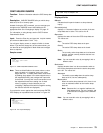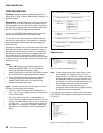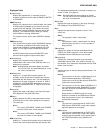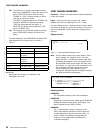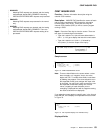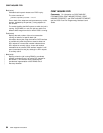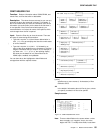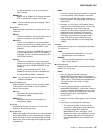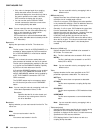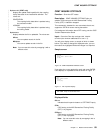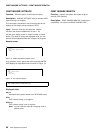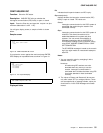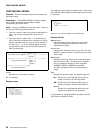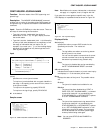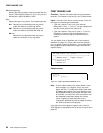CEMT INQUIRE FILE
It indicates that when a file is next opened, its
data is erased.
NOEMptyreq
Applies only to VSAM files. It indicates that when
a file is next opened, its data is not erased.
Note: You can reset this value by overtyping it with a
different value.
Enablestatus
displays whether transactions can access the file. The
values are:
ENabled
The file is available for use by transactions and, if
closed, it is opened on the first request.
UNenabled
The file is not available for use by transactions
except for those that are currently using it. If there
are any such users, ‘BEING CLOSED’ is also
displayed.
This status is the same as DISABLED except that
it occurs implicitly when a SET FILE CLOSE is
requested. The file is enabled implicitly by a SET
FILE OPEN command.
DIsabled
The file is not available for use by transactions
except for those that are currently using it. If there
are any such users, ‘BEING DISABLED’ is also
displayed.
The file can be reenabled by a SET FILE
ENABLED command. (See also UNENABLED.)
It is not possible to disable a remote file.
Note: You can reset this value by overtyping it with
Enabled or Disabled.
Exclstatus (
BDAM only
)
displays whether records on this file are to be placed
under exclusive control when a read for update is
issued. The values are:
EXclusive
Records on the file are protected from
simultaneous update.
NOEXclusive
Records on the file are not protected from
simultaneous update.
FIle(
value
)
indicates that this panel relates to a file inquiry and
displays an 8-character file name.
| Keylength(
value
)
| displays the length of the record key for a file associated
| with a VSAM KSDS or a file associated with a coupling
| facility data table. If the file is associated with a BDAM
| data set, the value is the length of the logical key used
| for deblocking.
| Notes:
| 1. If the file is closed and the key length is not defined
| in the file definition, CICS displays a zero value.
| 2. If the file is closed and a key length is defined on
| the file definition, CICS displays the value from the
| file definition.
| 3. Generally, if a file is open, CICS obtains the key
| length from the associated data set, in which case
| CICS displays the value from the data set.
| However, files that refer to coupling facility data
| tables defined with LOAD(NO) must get their
| keylength from the file definition, in which case
| CICS returns the defined value when the file is
| open. This value must also match that of the
| coupling facility data table if it has already been
| created.
| Loadtype
| displays the load type for a coupling facility data table.
| The values are:
| LOAD
| The coupling facility data table is, or is to be,
| preloaded from a source data set.
| NOLOAD
| The coupling facility data table is not preloaded
| from a source data set.
Maxnumrecs(
value
)
displays the maximum number of records that the data
table for this file can hold.
| Notes:
| 1. If the file resource definition specifies a
| MAXNUMRECS numeric value, even though the
| object is not a table (NOTTABLE is displayed on the
| TABLE option), CICS displays the specified value.
| The value can be in the range 1 through
| 99 999 999.
| 2. If the file resource definition is specified with
| MAXNUMRECS(NOLIMIT), meaning the number of
| records is unlimited, CICS displays a value of zero.
| (Internally, CICS holds NOLIMIT as the maximum
| positive fullword value (+2147483647 or
|X'7FFFFFFF').
| 3. If the file is remote, CICS displays a value of minus
| 1 (-1).
| 4. If the object is a coupling facility data table:
| The maximum number of records can be
| altered by a coupling facility data table server
| command, leaving the file definition
| MAXNUMRECS value unchanged. CICS
| displays the value in the file definition until the
| file is opened, after which CICS displays the
| actual MAXNUMRECS value defined to the
| server.
Chapter 11. Master terminal CEMT 87



